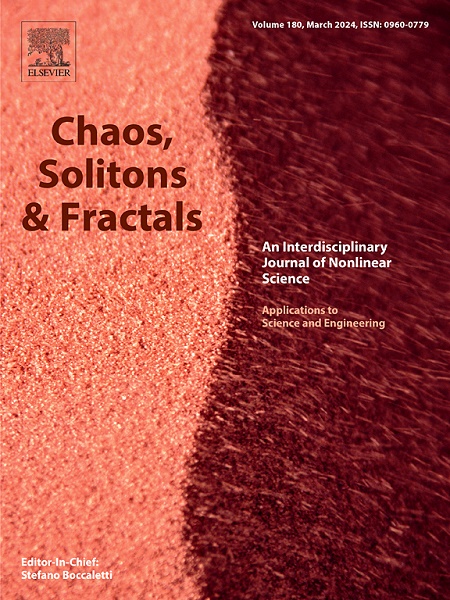多层有向随机网络:光谱特性的缩放
IF 5.6
1区 数学
Q1 MATHEMATICS, INTERDISCIPLINARY APPLICATIONS
引用次数: 0
摘要
由于在自然和人造系统中广泛存在多层网络,在随机矩阵理论(RMT)方法的激励下,在本研究中,我们在由M层组成的两个设置中计算多层有向随机网络(mdrn)的特征函数和频谱特性,这些层的大小为N:一条线和一个完整的图(节点对齐的多路网络)。首先,我们在数值上证明了mdrn特征函数的归一化定位长度β遵循由β=x∗/(1+x∗)给出的简单标度律,其中x∗是M, N以及层内和层间边数的非平凡函数。然后,我们证明了mdrn的其他特征函数和谱RMT度量(特征函数的逆参与比,最近邻和最近邻特征值距离之间的比率,以及连续奇异值间隔之间的比率)也与x∗成比例。我们在现实世界的网络上验证了我们的结果。本文章由计算机程序翻译,如有差异,请以英文原文为准。
Multilayer directed random networks: Scaling of spectral properties
Motivated by the wide presence of multilayer networks in both natural and human-made systems, within a random matrix theory (RMT) approach, in this study we compute eigenfunction and spectral properties of multilayer directed random networks (MDRNs) in two setups composed by layers of size : A line and a complete graph (node-aligned multiplex network). First, we numerically demonstrate that the normalized localization length of the eigenfunctions of MDRNs follows a simple scaling law given by , where is a nontrivial function of , , and number of intra- and inter-layer edges. Then, we show that other eigenfunction and spectral RMT measures (the inverse participation ratio of eigenfunctions, the ratio between nearest- and next-to-nearest- neighbor eigenvalue distances, and the ratio between consecutive singular-value spacings) of MDRNs also scale with . We validate our results on real-world networks.
求助全文
通过发布文献求助,成功后即可免费获取论文全文。
去求助
来源期刊

Chaos Solitons & Fractals
物理-数学跨学科应用
CiteScore
13.20
自引率
10.30%
发文量
1087
审稿时长
9 months
期刊介绍:
Chaos, Solitons & Fractals strives to establish itself as a premier journal in the interdisciplinary realm of Nonlinear Science, Non-equilibrium, and Complex Phenomena. It welcomes submissions covering a broad spectrum of topics within this field, including dynamics, non-equilibrium processes in physics, chemistry, and geophysics, complex matter and networks, mathematical models, computational biology, applications to quantum and mesoscopic phenomena, fluctuations and random processes, self-organization, and social phenomena.
 求助内容:
求助内容: 应助结果提醒方式:
应助结果提醒方式:


